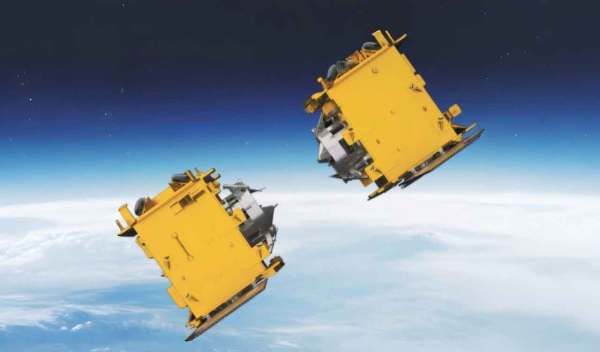
With this, India becomes the fourth nation after the US, Russia and China to have demonstrated space docking capability
Updated On – 16 January 2025, 02:33 PM
The Indian Space Research Organisation (ISRO) achieved a historic milestone on January 16, 2025, by successfully performing the docking of satellites as part of the Space Docking Experiment (SpaDeX).
With this, India becomes the fourth nation after the US, Russia and China to have demonstrated space docking capability.
What is Space Docking
Space Docking is a process where two spacecraft are connected in space. Here a spacecraft joins with another spacecraft or space station. For example, the International Space Station (ISS) receives cargo and crew through docking from spacecraft such as SpaceX’s Dragon or Russia’s Soyuz. This process requires precise alignment and control to ensure the safety and stability of both spacecraft.
Why space docking is important for India
SpaDeX has paved the way for India’s future endeavours in space exploration such as Chandrayaan-4 and Gaganyaan, and also its planned space station Bharatiya Antariksh Station (BAS).
According to ISRO, the SpaDeX mission is a cost-effective technology demonstrator mission for the demonstration of in-space docking using two small spacecraft that was launched by PSLV.
The docking technology is essential when multiple rocket launches are required to achieve common mission objectives.
How ISRO achieved success
On December 30, 2024, ISRO successfully launched its SpaDeX mission. The PSLV C60 rocket carried two small satellites, SDX01 (Chaser) and SDX02 (Target), along with 24 payloads, lifted off from the first launch pad of the Satish Dhawan Space Centre in Sriharikota, Andhra Pradesh.
The two small spacecraft weighing about 220 kg each were launched into a 475-km circular orbit.
The PSLV vehicle gave a small relative velocity between the Target and Chaser spacecraft for their separation from the launch vehicle. This velocity allowed the Target spacecraft to build a 20-km inter-satellite separation from the Chaser.
In the end, the Target and Chaser were in the same orbit with identical velocity but were separated by about 20 km, known as Far Rendezvous.
Another small relative velocity was applied between the two spacecraft which helped the Chaser approach the Target with progressively reduced inter-satellite distances ultimately leading to the docking of the two spacecraft.
From here, electrical power transfer between the two satellites will be demonstrated before the undocking and separation of the two satellites to start the operation of their respective payloads for a mission life of up to two years.
On January 12, ISRO brought the two spacecraft to three metres and then moved them back to safe distance in its trial attempt to dock the satellites.
Indigenous technologies ISRO developed for the mission
Owing to its small size and mass, it was even more challenging to put these technologies in SpaDeX as finer precision was required for the rendezvous and docking maneouvers.
Who developed the spacecraft
The SpaDeX spacecraft were designed by the UR Rao Satellite Centre (URSC) with the support of other ISRO centres (VSSC, LPSC, SAC, IISU, and LEOS). The spacecraft, in its orbital phase, was controlled from ISTRAC using ISRO ground stations and other externally hired ground stations.
The full integration and testing of the satellite were carried out at Ananth Technologies, Bengaluru, under the supervision of URSC.